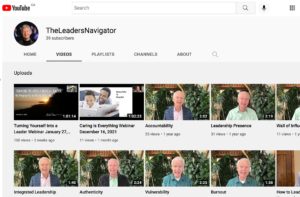In recent months, smart companies are finally seeing the futility of the old, outdated rule-based, bureaucratic “evaluation systems” of performance management. Many organizations I work with are abolishing their “rank and yank” systems that assign employees a performance score relative to their peers, while punishing or firing those with low grades. Other organizations are wisely rethinking their practices. Whether you agree or disagree with UCLA researcher Samuel Culbert’s assessment that performance reviews are “a curse on corporate America,” it’s nonetheless clear that performance reviews and evaluations are finally losing their appeal.
Why Performance Management Fails
First, the world has changed. Today’s employees want open communication and collaboration with their peers and with their bosses. They want partnerships, not parents. Today’s employees are also far more apt to want to know more immediately how they are doing and if they are meeting expectations and heading in the right direction. The world isn’t on an annual cycle any more for anything.
Second, being evaluated is demeaning. It’s based on an outdated parental, parent/child model of supervision that is founded on the belief that because a person is given a title they have authority over people. What right does anyone have to evaluate another person? No wonder performance reviews breed all kinds of unnecessary fear, resentment, and resistance. Leadership today is about service, not submission, supervision, and self-centeredness.
Third, if organizations want to develop highly engaged, contributing performers, managers must be equipped to coach and empower them. Today’s workers don’t see their managers as experts in specific subject areas the way their predecessors did. After all, the information they think they need is readily available to them online. Instead, they look to their managers for coaching and mentorship and find purpose through learning, contributing, and growing on the job.
The truth is that employees don’t need annual performance reviews to know how they stack up against their peers. Companies need to stop merely managing performance and start actually developing it.
The Alternative: Accountability Agreements
Instead of evaluating people, start holding them accountable. Here’s how:
Step 1. Build trust. Accountability without trust is compliance. Make the connection. Be trustworthy. Keep your promises. Be accountable. Genuinely invest in people lives. Be interested in what matters to them, what motivates them, and how you can support them to grow. People need to feel safe so they can be honest without fear of punishment. The key is not just walking around; it is opening up, paying attention, and being in touch. People don’t care how much you know until they know how much you care.
Step 2. Engage. Accountability without passion is drudgery. Do all you can to help and coach your employees to find their unique abilities, passion, and goals and how work fits into the context of their life. Be sure you have done everything you can to help them find a fit. Fit people; don’t fix people. Stay away from evaluating people and focus on how to support each other to grow and achieve clearly defined success.
Step 3. Clarify Expectations. Ambiguity breeds mediocrity. People need to be clear about what is expected and how success is defined. Clarify operational (competency) expectations, as well as describing in behavioral terms the kind attitude that is required and what results are promised. Before you make an agreement, be sure the willingness, the resources, and the capabilities are in place.
Step 4. Clarify Agreements. A request is not an agreement. If you want to hold someone accountable, you must get their full 100% agreement. If you don’t get an agreement to a required request, then go to Step 6.
Step 5. Clarify Support Requirements. To be committed and engaged, people need to feel that they can talk openly about the support they require to achieve their accountabilities. They need to feel that you are committed to do all you can to help them find the resources and capabilities to do their job and grow in the process. What support is needed? Your employee’s negotiated support requirements will be your accountability to them. The support requirements of your employees will be their accountabilities to you.
Step 6. Clarify Consequences. With no consequences there will be no accountabilities. Always start with positive consequences (motivators). Motivators are the internal or external results of delivering on your accountabilities. Motivators are meant to inspire you to achieve your accountabilities. If these don’t get the job done, then go to negative consequences.
Step 7. Follow up. Follow up means a clear understanding of a plan for follow-through, including how often you need to meet and with whom to ensure that you hold yourself and each other accountable for honoring the promises you have made to each other.


